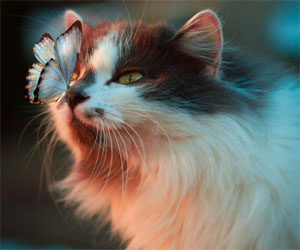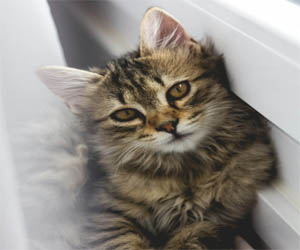


The Profound Benefits Of Lucid Dreaming

Lucid dreaming, a state where dreamers become aware that they are in a dream and can often control the dream's narrative, is a unique and captivating phenomenon that offers a multitude of benefits. Beyond the sheer joy of experiencing fantastical adventures, lucid dreaming has been explored and celebrated for its potential positive impacts on personal growth, mental well-being, and problem-solving.
Emotional Healing: One of the primary benefits of lucid dreaming is its capacity to promote emotional healing. In lucid dreams, individuals can confront unresolved emotional issues, phobias, and anxieties in a safe and controlled environment. By directly engaging with these emotions within the dream, they may find it easier to process and overcome them in waking life.
Enhanced Problem-Solving: Lucid dreaming can be a powerful tool for creative problem-solving. Dreamers can intentionally explore solutions to real-world challenges within the dream state. The dream world, free from the constraints of reality, often offers fresh and innovative perspectives that can be applied to waking life.
Overcoming Nightmares: For those plagued by recurrent nightmares, lucid dreaming provides a means to take control of the dream and transform it into a positive or neutral experience. This can be an empowering way to combat night terrors and reduce sleep disturbances.
Personal Growth: Lucid dreaming opens a gateway to self-discovery. By delving into the subconscious, individuals can gain profound insights into their own desires, fears, and motivations. This self-awareness can foster personal growth and greater self-acceptance.
Enhanced Creativity: Lucid dreams are a playground for creativity. Dreamers can engage in artistic pursuits, explore their imagination, and generate innovative ideas within the dream world. Many creative professionals use lucid dreaming as a wellspring of inspiration.
Physical Skill Enhancement: Surprisingly, some studies suggest that lucid dreaming may contribute to the improvement of physical skills. Athletes, for example, can rehearse their movements and refine their techniques during lucid dreams, potentially translating these skills into real-life improvements.
Exploration And Adventure: Lucid dreaming allows for incredible adventures in a realm limited only by the imagination. Dreamers can visit fantastical landscapes, meet intriguing characters, and experience breathtaking phenomena. This offers a unique form of entertainment and escapism.
Improved Sleep Quality: Lucid dreamers often report improved sleep quality. Becoming aware within a dream can reduce the likelihood of experiencing nightmares or night terrors, leading to more restful and rejuvenating sleep.
Reduced Stress And Anxiety: Engaging with the dream world in a lucid state can reduce stress and anxiety levels. Dreamers can confront sources of stress within the dream and develop strategies for dealing with them in waking life.
Spiritual And Metaphysical Exploration: Lucid dreaming is valued in various spiritual and metaphysical traditions as a means of achieving heightened states of consciousness and exploring the mysteries of the soul. It can be a tool for introspection, meditation, and spiritual awakening.
The benefits of lucid dreaming extend far beyond the realm of fantasy. This remarkable state of consciousness offers a pathway to emotional healing, personal growth, enhanced creativity, and improved problem-solving. Whether pursued for therapeutic reasons or simply for the joy of exploration, lucid dreaming remains a captivating and powerful tool for unlocking the potential of the human mind. With practice and dedication, anyone can harness the benefits of lucid dreaming and embark on a journey of self-discovery and boundless adventure.
 Environmental Conservation: A smaller carbon footprint helps protect natural ecosystems, reducing habitat destruction, and preserving biodiversity. This is vital for the health of the planet's diverse flora and fauna.
Environmental Conservation: A smaller carbon footprint helps protect natural ecosystems, reducing habitat destruction, and preserving biodiversity. This is vital for the health of the planet's diverse flora and fauna.
Resource Conservation: Many of the activities that contribute to carbon footprints, such as energy consumption and waste generation, also deplete finite resources. Reducing these activities helps conserve resources like water and fossil fuels.
Key Strategies For Carbon Footprint Reduction:
Energy Efficiency: Improving energy efficiency is a fundamental step in reducing one's carbon footprint. This can be achieved through actions like using energy-efficient appliances, insulating homes, and optimizing heating and cooling systems.
Renewable Energy: Transitioning to clean, renewable energy sources like solar and wind power significantly reduces carbon emissions. Installing solar panels on homes and businesses is an increasingly accessible option.
Sustainable Transportation: Using public transportation, carpooling, biking, walking, or driving fuel-efficient or electric vehicles all contribute to reduced emissions from the transportation sector.
Waste Reduction: Minimizing waste production through recycling and composting reduces the emissions associated with waste disposal in landfills.
Low-Carbon Diet: Adopting a diet that includes more plant-based foods and less meat, particularly beef, can lower the carbon footprint of food consumption.
Conservation: Conserving water and reducing consumption of water-intensive products, like meat and certain crops, contributes to a smaller carbon footprint, as energy is used in the production and transport of water.
Green Consumer Choices: Choosing products with lower carbon footprints and supporting environmentally conscious businesses can help drive demand for sustainable practices.
 Stage 3: Socialization Stage (3-14 Weeks)
Stage 3: Socialization Stage (3-14 Weeks)
The socialization stage is a critical period that usually spans from 3 to 14 weeks. During this time, puppies are highly impressionable. They become more curious and open to new experiences. It's an ideal time to expose them to various people, animals, environments, and situations. Proper socialization can help prevent fear and aggression issues later in life.
Stage 4: Juvenile Stage (3-6 Months)
The juvenile stage occurs from three to six months of age. Puppies go through rapid growth and development during this period. They may experience teething, increased energy levels, and a stronger desire to explore their surroundings. Obedience training should begin during this phase to instill basic commands and good manners.
Stage 5: Adolescent Stage (6-18 Months)
The adolescent stage spans from six to 18 months. This stage is characterized by the dog's transition into sexual maturity. Behavioral changes and challenges can emerge, including increased independence, the testing of boundaries, and sometimes a resurgence of puppy-like behavior. It's essential to maintain consistent training and provide appropriate outlets for their energy.
Stage 6: Early Adulthood (1-3 Years)
Early adulthood typically starts around one year of age and continues until around three years. Dogs become physically and mentally mature, and their behavior stabilizes. They are more capable of advanced training and can participate in various activities, such as agility or advanced obedience training.
 3. Playful And Energetic Cats: If you have a cat that is constantly on the move, chasing toys, and pouncing on imaginary prey, you have a playful and energetic companion. These cats are often young and curious, and they require plenty of mental and physical stimulation to stay happy.
3. Playful And Energetic Cats: If you have a cat that is constantly on the move, chasing toys, and pouncing on imaginary prey, you have a playful and energetic companion. These cats are often young and curious, and they require plenty of mental and physical stimulation to stay happy.
4. The Cool And Calm Cats: Some cats exude a sense of calm and tranquility. They are not easily perturbed by changes in their environment and may be more adaptable to new situations. These cats can provide a soothing presence in your home.
5. Vocal And Chatty Cats: If your cat is a talker, you have a chatty feline. Some cats are more vocal than others, expressing themselves through meows, purrs, and even chirps. Understanding their unique vocalizations can help you interpret their needs and moods.
6. Shy And Timid Cats: Shy and timid cats are often cautious in new situations and may take time to warm up to people or other animals. Patience and gentle encouragement are key to helping them build confidence.
7. Confident And Fearless Cats: Conversely, some cats are fearless and confident in any situation. They may be the first to investigate new visitors or explore unfamiliar spaces. These cats tend to have a strong sense of curiosity and adventure.
8. The Lap Cat: Lap cats are the epitome of affection. They love to snuggle on your lap or curl up next to you. These cats provide warmth and comfort, and their purring is a soothing melody of contentment.
9. Mischief Makers: Mischief makers are the cats that love to explore and get into everything. They may be prone to knocking things off shelves, unraveling toilet paper, and generally causing playful chaos. While their antics can be exasperating, they bring a dose of humor to your life.






A Cosmic Connection?
 Extraterrestrial Communication
Extraterrestrial Communication
Advocates of the extraterrestrial hypothesis propose that crop circles serve as a form of communication between advanced civilizations and humanity. They believe that these intricate patterns convey messages, symbols, or even mathematical codes that can hold the key to understanding the intentions or knowledge of these extraterrestrial beings.
Unexplained Anomalies
One of the intriguing aspects often cited in connection with this theory is the presence of unexplained anomalies in the vicinity of crop circles. Witnesses have reported sightings of strange lights, glowing orbs, and other unidentified aerial phenomena near the formations. These accounts have led some to speculate that these phenomena are linked to the arrival or departure of extraterrestrial craft.
Challenges To The Theory
While the idea of extraterrestrial intelligence creating crop circles is compelling, it faces significant challenges. Skeptics argue that the majority of crop circles are, in fact, the work of human artists who use simple tools such as boards and ropes to create their designs. They contend that the intricate patterns can be achieved without the need for advanced technology.
Human-Made Crop Circles
Human-made crop circles have been well-documented and even demonstrated by individuals and groups. These formations are often the result of careful planning and artistic intention rather than extraterrestrial messages. The presence of artistic and geometric elements in many crop circles supports the argument for human involvement.
Scientific Investigations
In response to the extraterrestrial hypothesis, scientific investigations have been conducted to study the physical and biological effects of crop circles. These studies aim to determine whether there are any unique characteristics in crop circle formations that could support the notion of extraterrestrial involvement.
Ensuring A Happy And Healthy Feline Friend
 3. Vaccinations And Preventive Care
3. Vaccinations And Preventive Care
Vaccinations and preventive care are vital to maintaining cat wellness. Keep your cat up to date with vaccinations, and discuss preventive measures such as flea and tick control, heartworm prevention, and dental care with your veterinarian.
4. Dental Health
Oral health is often overlooked but is critical for cat wellness. Dental problems can lead to various health issues. Regular dental care, including brushing your cat's teeth and providing dental treats or toys, can help keep their teeth and gums in good condition.
5. Grooming And Hygiene
Grooming is not just about keeping your cat looking their best; it's essential for their wellness. Regular brushing helps reduce shedding, prevents matting, and strengthens your bond with your cat. Some long-haired breeds may require more frequent grooming.
6. Hydration
Proper hydration is essential for cat wellness. Ensure your cat has access to fresh, clean water at all times. Cats can be finicky about their water source, so consider a cat water fountain if your cat prefers running water.
7. Mental And Physical Stimulation
Cats need mental and physical stimulation to stay happy and healthy. Provide toys, scratching posts, and playtime to keep your cat engaged and prevent boredom. This is particularly important for indoor cats.
8. Safe Environment
Creating a safe environment for your cat is paramount to their wellness. Keep toxic plants, chemicals, and small objects out of reach. Consider window perches, scratching posts, and safe outdoor spaces for enrichment.